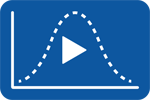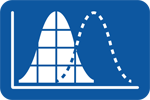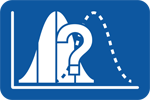Regression: Module Post-Test
The aim of Ordinary Least Squares (OLS) Regression Line also called the regression coefficient or slope (B) is to produce a line that allow you to make predictions about subjects’ performance on one variable, if you know their performance and another variable. For example, if you were a university professor, you might wish to use the number of hours your students worked outside of the university per week to predict their marks on your weekly quiz. Ordinary Least Squares (OLS) Regression does this by trying to minimizes the sum of the squared deviations. This sounds more complicated than it actually is. If you remember the formula for variance, it is the same idea, only now we may have a moving mean rather than a fixed mean. The other difference is that we have two sets of scores rather than one. Like is the case with the correlation coefficient, the regression coefficient or slope is based on the co-variance of two variables. Co-variance is the degree to which changes in one variable are systematically related to changes in another variable. Where the correlation coefficient is an index of the strength of the association between two variables, the regression coefficient is the predicts the change that you will see in one variable for each one unit change you see in the other.
- Understand the key concept of covariance
- Appreciate how a regression coefficient indicates the amount of change in one variable that is associated with a change in another variable
- Recognize the difference between positive and negative slopes (regression coefficients)
- Using data points and scatterplots, demonstrate the factors that influence a regression coefficient





